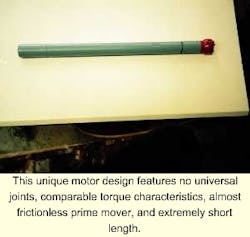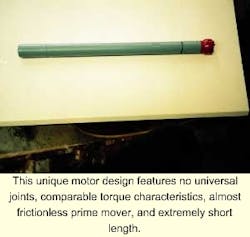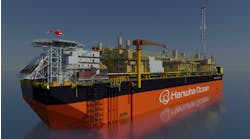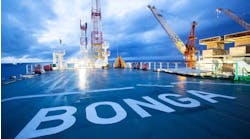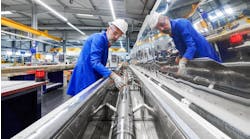Innovation, technology, and re-innovation
This unique motor design features no universal joints, comparable torque characteristics, almost frictionless prime mover, and extremely short length.
The oil and gas industry has always been a breeding ground for creative solutions to unique problems. The very nature of the oil and gas industry is exploring the unknown.
Imaging a little deeper with seismic, seeing a little further into the formation with deeper investigation logging tools, fracturing a little deeper into the formation with new and improved fracturing techniques, and yes, drilling a little further and faster with better drilling tools are just a few areas where our creative solutions have been, and are still needed.
This entrepreneurial spirit even extends into the post-exploration and well construction phases. Workover applications receive a fair share of this creative energy also. Well cleanout operations are common in workover programs. In some of these well cleanout situations, downhole motors are used to speed up the process and reduce workover operation time, getting the well back on production.
Since 1993, Industrial Science Enterprises in Edgewood, Texas, has researched and developed downhole motors for well servicing and open-hole directional drilling. The well servicing market has primarily been the market of focus to date. Tool development and evolution has seen prototype designs using conventional prime movers such as axial flow turbine, metal-to-metal power sections, direct-drive vane motors, and other types with no name. Ironically, the most common type, the Moineau principle motor, was not explored because of perceived inefficiencies and limitations.
Design has revolved around two key areas: reducing high internal friction and eliminating universal joints. Two different primemovers have been selected - one for gas (dry nitrogen preferred) and one for liquid-based operating fluids. Both feature almost frictionless all-metal power sections with non-metal seals, and no universal joints in the working mechanism. The in-line drive coupling is accompanied by a self-designed bearing section and boasts extremely short length - an attribute highly favored by production and workover engineers.
Tools with outside diameters as small as 7/8-in. and up to 2 1/8-in. have been built. Tool length is where these designs begin to separate from the pack. The liquid motor is 25-in. long, and the gas-operated motor is 32-in. long. This compares to a conventional positive displacement motor (PDM) of 84 to 104-in. in length. This is a step-change reduction in tool length and ultimately operating string length. Current work is qualifying the tools for high temperatures. This difficult environment takes heavy tolls on conventional PDM motor power sections.
Intelligent completion first off Brazil
The first intelligent well off the coast of Brazil features Baker Oil Tools' all electric system. The unit was installed by Petrobras.
The biggest player off of the Brazilian coast has committed to what is most likely the first intelligent completion system in that region. Living up to their reputation of not being afraid of front-end technologies, Petrobras is setting the pace in what will probably be the next hottest development area in the world.
The deepwater and ultra-deepwater off the coast of Brazil demand certain attention be placed on reducing future potential workover operations. Intelligent well solutions are the best alternative to addressing this need. This move by Petrobras may finally serve as the catalyst for other operators to start embracing and installing intelligent completion technologies in this region and in other areas around the world.
The system of choice is Baker Oil Tools' InCharge Intelligent Well Systemtrademark, which features a simple, all-electronic, single 1/4-in. penetration design, and a power-on-communication structure. The installation will be qualification deployed near Natal, Brazil, early 2001. Final operational deployment will be in the ultra-deepwater Roncador Field.
As an industry, we've taken our time in evaluating and further developing these technologies. Key directional decisions, such as what kind of system to develop, hydraulic or electric, or a mix of the two, are most likely the reason for developing technologies.
DOT outlines challenges in deepwater future
Among the most significant challenges in deepwater development in the coming years will be reducing project cycle time by 25% and extending real-time operations to all services, according to David Lesar, Chairman and CEO of Halliburton and a keynote speaker at the Deep Offshore Technology Conference (DOT 2000) in New Orleans. Other challenges, he pointed out, are matching surface and subsea facilities to the reservoir's production, finding ways to "book" reserves in marginal fields, and opening the ultra-deepwater frontier.
Lesar reminded delegates that the big untapped reservoirs are located in the deepwater areas of the world. Significant problems face the industry in five main areas: new commercial relationships, attraction of capital, limited equipment capacity, demographics, and tighter design/planning integration on projects.
David Welch, Vice President of BP, another keynoter at DOT, defined the industry's purpose as bringing heat, light, and mobility to the world, but he emphasized that the purpose must be balanced against the general public's concern about the environment. He also stressed the need for all parties to collaborate because "no one has all the answers."
Andrew Latham, Vice President of Wood Mackenzie, another keynoter, said deepwater production worldwide will double in the next three years to 4 million b/d; Caspian Sea development will compete with Middle East projects for new capital; and West Africa will exceed both the Gulf of Mexico and Brazil in deepwater importance.
In the next few years, the deepwater proportion of production will grow as depletion removes older fields from production. The deepwater era is only beginning.
Editor's Note: Lots of R&D investment dollars are required for these technologies, and without an ind-ication from operators as to the preferred type of system, it has been left up to the service companies to develop their own solutions. The result is all of the above-mentioned types of systems. Choices are advantages, especially in situations where lots of investment capital is at stake. Personal preference will play a role in the "early development days" of these technologies. Expect all of them to be used in some form or other. Only time will tell which one, or combination, performs the best.
